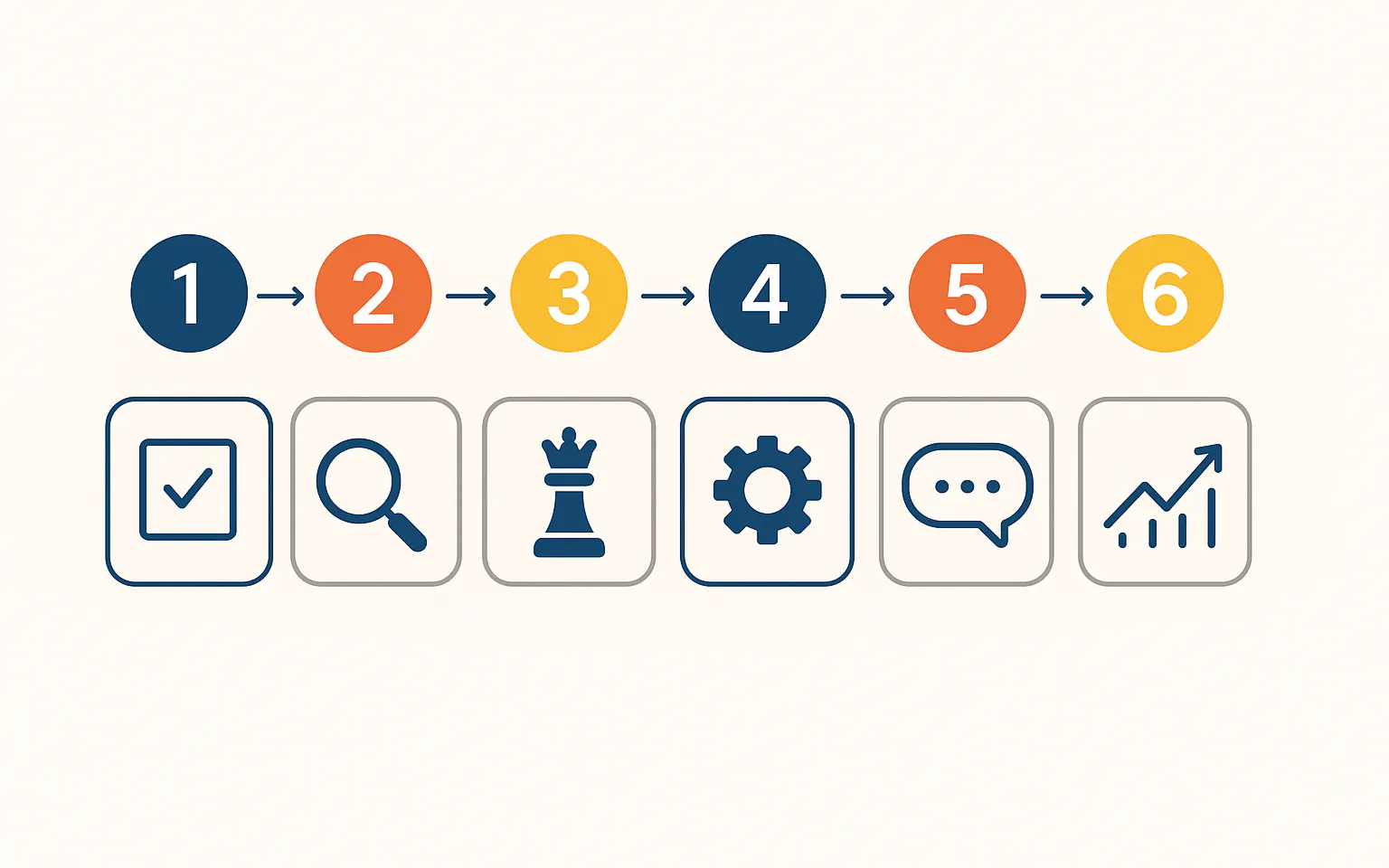- BRANDING
- Vol.191
Strategic Designer
T.M.
- Vol.191
- BRANDING
- 2025.10.30
Integration of brand strategy, organizational culture, and business strategy
In today’s mature markets, it has become increasingly difficult to differentiate products and services based solely on function or price. As a result, brands have emerged as the decisive factor influencing customer choice. A “brand” is not merely a logo or an advertisement—it represents the total value customers experience through products and services: a collective of expectations, trust, and experiences. In this sense, a brand is a core management resource rooted in an organization’s business strategy and culture.
Recent environmental shifts—such as market saturation, changes in consumer behavior, and technological advancements—have revealed that treating branding as a mere marketing function is no longer sufficient. Placing the brand at the heart of management, and integrating it across organization, strategy, and execution, is essential to building sustainable brand equity※1※1The intangible value of a brand—the ability to gain higher preference or pricing through consumer trust, affection, and recognition..
This article introduces the fundamentals of brand integration, where business strategy, organizational culture, and brand strategy function coherently as one unified system.
※1 The intangible value of a brand—the ability to gain higher preference or pricing through consumer trust, affection, and recognition.

1.The basic structure of brand integration
This section introduces the fundamental structure and the relationship between brand and organizational culture that should be understood when integrating brand strategy, business strategy, and organizational culture.
1-1. The Trifecta Model of Strategic Brand Management
Brand value emerges when the three elements—“Business Strategy,” “Organizational Culture,” and “Brand Strategy”—function consistently together. A brand does not become strong through isolated marketing initiatives alone; the ideal state is one where organizational decision-making, actions, and systems support the brand’s promise (i.e., brand identity). This is the core of the framework presented by David Aaker※2※2David Aaker is an authority in brand strategy, known for proposing the concept of "brand identity." He is widely influential for his theories and practical models on enhancing brand value and loyalty.. Brand identity itself will be introduced in Section 1-2.
A brand must be translated not only into “words (concepts)” but also into “actions” and “systems.” For example, incorporating the [remark id=Customer promise offset=]Customer promise[/remark] into call center responses or product planning KPIs※3※3KPI, or Key Performance Indicator, is a critical metric used to track progress toward achieving ultimate goals. ensures that the brand is embedded in daily operations.
※2 David Aaker is an authority in brand strategy, known for proposing the concept of "brand identity." He is widely influential for his theories and practical models on enhancing brand value and loyalty.
※3 KPI, or Key Performance Indicator, is a critical metric used to track progress toward achieving ultimate goals.
1-2. The Relationship Between Brand Identity and Organizational Culture
Brand identity is the collection of “ideal associations (values, personality, tone)” that a company wishes to communicate to its customers. In contrast, organizational culture consists of the rules guiding employees’ everyday actions and decision-making. Ideally, brand identity is “practiced daily” within organizational culture, manifesting externally as a consistent brand image. When misaligned, gaps arise between external messaging and on-the-ground experiences, resulting in brand inconsistency.

2. Analytical framework for developing brand strategy
In the early stages of brand strategy planning, frameworks are effective for organizing the external environment and internal resources. Here, we explain three representative frameworks. They are also introduced in INSIGHTS vol.122, so you may refer to that article as well. Below, we summarize each framework to highlight only the key points useful for brand strategy planning.
2-1. PEST Analysis (External Macro Environment)
Key Points: Check the external environment from four perspectives—Politics, Economy, Society, and Technology. In brand strategy, social trends, regulatory changes, and technological shifts can alter the conditions under which a brand exists, so these factors must not be overlooked.
How to Use (Template):
・Politics: Legal revisions, regulations, industry rules (e.g., sustainability-related laws)
・Economy: Economic conditions, consumer behavior, changes in price sensitivity
・Society: Demographics, lifestyles, values
・Technology: Digitalization, AI, manufacturing technologies, etc.
PEST Check (Example):
・Politics: Changes in consumption tax / Strengthening of environmental regulations
・Economy: Decline in disposable income / Intensified price competition
・Society: Shifts in youth values / Diversification of preferences
・Technology: Evolution of e-commerce platforms / Acceleration of AI adoption
2-2. 3C Analysis (Customer, Competitor, Company)
Key Points: Understand the market from three perspectives—Customer, Competitor, and Company. By clarifying target needs and latent issues, competitor positioning, and your own core competencies and weaknesses, you can identify the areas where the brand should be differentiated.
Practical Tips:
・Customer: Combine quantitative data (purchase data) and qualitative insights (interviews)
・Competitor: Include not only direct competitors but also alternatives (substitute categories)
・Company: Deepen understanding of capabilities (technology, sales network, culture) and advantages
2-3. SWOT Analysis (Comprehensive Internal & External Review)
Key Points: Organize Strengths, Weaknesses, Opportunities, and Threats to outline winning strategies for the brand. By mapping the points identified in PEST and 3C analyses into SWOT, you can clarify which opportunities to leverage and which weaknesses to address.
Example Strategies from SWOT:
・SO (Use strengths to seize opportunities): Launch a premium line by combining company technology with new market needs
・WO (Overcome weaknesses to seize opportunities): Compensate for missing capabilities through external partnerships
・ST (Use strengths to avoid threats): Strengthen brand loyalty to avoid price competition
・WT (Minimize weaknesses and threats): Redesign differentiation while reducing costs
As outlined above, when planning a brand strategy, it is important to understand the current situation in a three-layer structure: “external environment,” “market structure,” and “company capabilities.”
PEST analysis provides a macro-level view of changes in politics, economy, society, and technology to grasp the external factors surrounding the brand. 3C analysis interprets the market reality by examining the relationships among customers, competitors, and the company, helping identify areas for differentiation. By integrating these insights in SWOT analysis, you can leverage strengths, seize opportunities, and formulate countermeasures for weaknesses and threats.
In short, the three frameworks—PEST, 3C, and SWOT—serve as a structured thinking process to design brand strategy based on “systematic understanding” rather than intuition or experience. By linking each analysis organically, it becomes possible to clearly define the brand’s market position and the direction for sustainable competitive advantage.

3. 6steps to actually integrate organizational and brand strategy
Here, we introduce six practical and realistic steps (Steps 1–6). Each step includes key actions, success conditions, and deliverables (outputs).
Step 1: Executive-Level Alignment (Governance Setup)
First, to treat the brand as a management priority, it is essential to obtain agreement from top management and design KPIs. The main actions include the following three items:
Key Actions:
・Document the purpose of brand integration (short-term and mid-to-long-term goals)
・Secure sponsorship from executives (clarify roles and authority)
・Establish KPIs and investment budget (Brand KPIs: awareness, favorability, NPS※4※4NPS (Net Promoter Score) is a metric that quantifies investors’ willingness to recommend a financial institution or product to others, used to measure customer satisfaction and loyalty., LTV, etc.)
Success Conditions:
Brand considerations are integrated into management decision-making (e.g., brand checks in investment approval processes and new business evaluations).
Deliverables:
Brand Integration Charter, Brand KPI Sheet
※4 NPS (Net Promoter Score) is a metric that quantifies investors’ willingness to recommend a financial institution or product to others, used to measure customer satisfaction and loyalty.
Step 2: Brand Current-State Diagnosis (Insight Collection)
Next, through insight collection, the current brand awareness, customer experience, and employee understanding of the brand are visualized.
Key Actions:
・Internal: Employee surveys, leader interviews, culture observation (identify mismatches between behaviors and systems)
・External: Customer interviews, [remark id=NPS/CS-Surveys offset=]NPS/CS surveys[/remark], competitor benchmarking
・Create touchpoint map (identify brand contact points across the customer journey)
Success Conditions:
The priority of issues is clearly defined through quantitative and qualitative data, and the brand touchpoints that should be addressed first are identified.
Deliverables:
[remark id=Brand-gap-report offset=]Brand Gap Report[/remark], Touchpoint Prioritization Table
Step 3: Strategic Design (Brand Identity and Positioning)
In this step, the target audience, value proposition, and [remark id=brand-personality offset=150]brand personality[/remark] are defined, ensuring alignment with the business strategy.
Key Actions:
・Integrate 3C, PEST, and SWOT analyses to strategize which customer segments to deliver value to
・External: Examine the Brand Pyramid (functional → emotional → social value)
・Design core messages and storytelling
Success Conditions:
The business strategy (product roadmap, channel strategy) and brand promise must be consistent. For example, if claiming “premium,” pricing, distribution, and customer service must be designed to support that positioning.
Deliverables:
Brand Brief※5※5A concise guide summarizing the core elements of a brand strategy—such as purpose, values, target, and messaging—used to ensure consistent brand understanding among internal and external stakeholders., Positioning Statement, Core Messages
※5 A concise guide summarizing the core elements of a brand strategy—such as purpose, values, target, and messaging—used to ensure consistent brand understanding among internal and external stakeholders.
Step 4: Organizational Design and Systemization (HR, Evaluation, Processes)
Next, organizational support is designed to execute the brand promise, including HR systems, evaluation and rewards, and learning programs.
Key Actions:
・Incorporate brand-expected behaviors into job descriptions (JDs)
・Add brand contribution indicators to evaluation systems (OKRs/KPIs)
・Introduce brand modules※6※6It is a framework that systematizes a brand’s key elements—such as values, messaging, and visual identity—to ensure consistent brand expression across all organizational and customer touchpoints. in training and onboarding programs
Success Conditions:
Mechanisms must function to enable employees to make brand-aligned decisions in daily operations (e.g., customer complaint handling guidelines, reward-linked incentives).
Deliverables:
Revised JDs, Evaluation Indicator Table, Training Curriculum
※6 It is a framework that systematizes a brand’s key elements—such as values, messaging, and visual identity—to ensure consistent brand expression across all organizational and customer touchpoints.
Step 5: Execution (Communication and Touchpoint Improvement)
Once organizational support mechanisms are in place, the next goal is to unify and visualize the brand experience across customer-facing touchpoints such as advertising, websites, stores, and customer support.
Key Actions:
・Create Brand Guidelines (tone & manner, visual standards, language usage)
・Define RACI※7※7A framework that clarifies roles and responsibilities in a project, organized into four categories: Responsible, Approver, Contributor, and Reportee. with each department (clarifying roles and responsibilities)
・Pilot implementation※8※8It involves implementing improvement measures at selected touchpoints, measuring their effectiveness, evaluating the impact, and using the results to guide the broader rollout. (execute improvement initiatives at selected touchpoints → measure effectiveness)
Success Conditions:
The brand experience at key customer touchpoints reaches a satisfactory level, with NPS and CS showing positive trends.
Deliverables:
Brand Guidelines, Improvement Roadmap, Pilot Results Report
※7 A framework that clarifies roles and responsibilities in a project, organized into four categories: Responsible, Approver, Contributor, and Reportee.
※8 It involves implementing improvement measures at selected touchpoints, measuring their effectiveness, evaluating the impact, and using the results to guide the broader rollout.
Step 6: Continuous Operation and Evaluation (Governance → Scaling)
Brand strategy does not deliver impact as a one-off effort. This phase focuses on continuous operation of initiatives and running a feedback loop for improvement based on results.
Key Actions:
・Monthly/quarterly brand KPI reviews
・Brand asset management (inventory of brand assets and allocation of investments)
・Regular reporting of brand insights to management meetings
Success Conditions:
Brand KPIs are linked to business metrics and are actively used in decision-making.
Deliverables:
KPI Dashboard, [remark id=Brand-asset offset=]Brand Asset Ledger[/remark]
This series of steps illustrates how to integrate brand strategy with business strategy and organizational culture. The key is to start small, create tangible results, and scale gradually. Instead of a complete overhaul from the outset, begin by aligning critical touchpoints (customer-facing interactions) and then expand alignment into organizational culture and systems.

4. Common pitfalls and countermeasures when implementing brand integration
Here, we introduce five common pitfalls in practice and specific countermeasures as “traps” to watch out for.
Pitfall 1: Top Management Supports but “Execution Power” Lags
Countermeasure → Clarify KPIs and budgets, and empower the execution team (cross-functional team). In the early phase, generate “short-term visible results” (pilot demonstrating a V-shaped effect) to solidify internal support.
Pitfall 2: Discrepancy Between External Messaging and On-Site Service (Ad Collapse)
Countermeasure → Map all touchpoints where customers interact, and concentrate investment on the three most impactful ones. Mandatory on-site training is essential.
Pitfall 3: Attempting to Solve the Brand Only Through “Design”
Countermeasure → Brand success relies on alignment of behaviors and systems. Design updates are only the entry point; simultaneously revise business processes and evaluation systems.
Pitfall 4: Judging Only by Short-Term KPIs (Sales) and Halting Long-Term Brand Building
Countermeasure → Track both short-term KPIs and long-term KPIs (brand awareness, favorability, LTV, etc.). Regularly display brand indices in management reports.
Pitfall 5: Only a Few Departments Are “Running the Brand”
Countermeasure → Brand management is a cross-functional business priority. Establish a cross-functional brand team and clearly define roles and responsibilities using RACI.
The success of brand initiatives depends less on strategy or design and more on establishing mechanisms for internal execution.
Reflect on your own brand activities and check whether your organization is falling into any of these five pitfalls. By carefully addressing each one, the brand will firmly take root within the organization and drive tangible results.
5. In Conclusion — What to Do and What to Avoid
To make brand strategy truly effective, it is essential to embed the principles of the brand into management itself. A brand represents a “promise,” and without organizational mechanisms to uphold that promise, the philosophy loses its form in day-to-day operations.
This article has presented an integrated design to align brand strategy, business strategy, and organizational culture in the same direction. A brand does not exist in isolation—it gains real power only when it conveys the intent of the business structure and is reflected in the behaviors of organizational culture.
<What to Do>
・Institutionalize continuous commitment from top management (formalize governance).
・Ensure the brand goes beyond “words” and is embedded in actions and systems (implementation in evaluation, rewards, and processes).
・Prioritize key touchpoints, run PDCA cycles, achieve short-term results, and scale gradually.
・Track both quantitative (NPS, awareness, LTV, etc.) and qualitative (customer and employee feedback) metrics together.
<What to Avoid>
・Limiting the brand to “cosmetic improvements in advertising.”
・Evaluating brand initiatives solely by short-term sales and discontinuing them before they bear fruit.
・Making brand decisions in siloed departments, undermining company-wide consistency.
Placing the brand at the center of management is not merely about “creating a brand strategy”; it is about redesigning corporate culture through the brand. When strategy, systems, behaviors, and culture mutually reinforce each other, the brand evolves from a temporary project into a sustainable corporate asset.
What is required of future companies may not be to be “brand storytellers,” but to be “brand embodyers.”
When everyone from top management to frontline employees acts in unison, making decisions anchored in the brand’s essence, the brand will naturally permeate society.
References:
・Hiroshi Tanaka, Brand Strategy Theory
・David A. Aaker / DIAMOND HBR, "Integrating Brand with Organization and Strategy — Placing the Brand at the Core of Management"
・BOEL: "Frameworks Useful for Formulating Brand Strategy (INSIGHTS vol.122)"
RECENT POSTS
- Vol.197Exploring the future of environmental design integrating vision, diversity, and a future-oriented perspective
- Vol.196Vision-making for diverse and future-oriented education: Interpreting the future of learning through environmental design
- Vol.195“One Health” and Japan — Toward an Era of Integrating Humans, Animals, and the Environment
- Vol.194The benefits and challenges of digital education in the AI era, and the future of learning
- Vol.193Vision-Making in the age of AI — How artificial intelligence is transforming the meaning of work and the nature of organizations